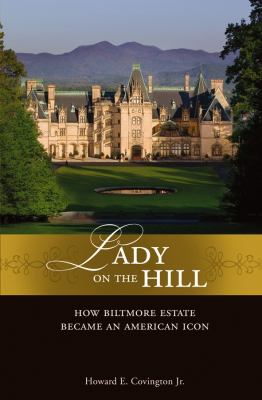
Book
|
Lady on the hill : how Biltmore Estate became an American icon
Copies
1 Total copies, 1 Copies are in,
0 Copies are out.
Title
Lady on the hill : how Biltmore Estate became an American icon
Call No
975.688 COV
Digital Link
Authors
Subjects
Cecil, William A. V.
Cecil, William A. V.
Cecil, William A. V. fast (OCoLC)fst01485564
Biltmore Estate (Asheville, N.C.)--History.
Biltmore Estate (Asheville, Car. du N.)
Biltmore Estate (Asheville, N.C.) fast (OCoLC)fst00672704
Mansions--Conservation and restoration--North Carolina--Asheville.
Historic buildings--Conservation and restoration--North Carolina--Asheville.
Hôtels particuliers--Conservation et restauration--Caroline du Nord--Ashville.
Monuments historiques--Conservation et restauration--Caroline du Nord--Asheville.
Buildings.
Historic buildings--Conservation and restoration.
Mansions--Conservation and restoration.
Asheville (N.C.)--Buildings, structures, etc.
Asheville (Car. du N.)--Constructions.
Asheville (N.C.)--Biltmore Estate.
North Carolina--Asheville.
History.
Cecil, William A. V.
Cecil, William A. V. fast (OCoLC)fst01485564
Biltmore Estate (Asheville, N.C.)--History.
Biltmore Estate (Asheville, Car. du N.)
Biltmore Estate (Asheville, N.C.) fast (OCoLC)fst00672704
Mansions--Conservation and restoration--North Carolina--Asheville.
Historic buildings--Conservation and restoration--North Carolina--Asheville.
Hôtels particuliers--Conservation et restauration--Caroline du Nord--Ashville.
Monuments historiques--Conservation et restauration--Caroline du Nord--Asheville.
Buildings.
Historic buildings--Conservation and restoration.
Mansions--Conservation and restoration.
Asheville (N.C.)--Buildings, structures, etc.
Asheville (Car. du N.)--Constructions.
Asheville (N.C.)--Biltmore Estate.
North Carolina--Asheville.
History.
Language
English
Published
Hoboken, N.J. : John Wiley, ©2006.
ISBN
0471758183
(cloth)
LCCN
2005017412








